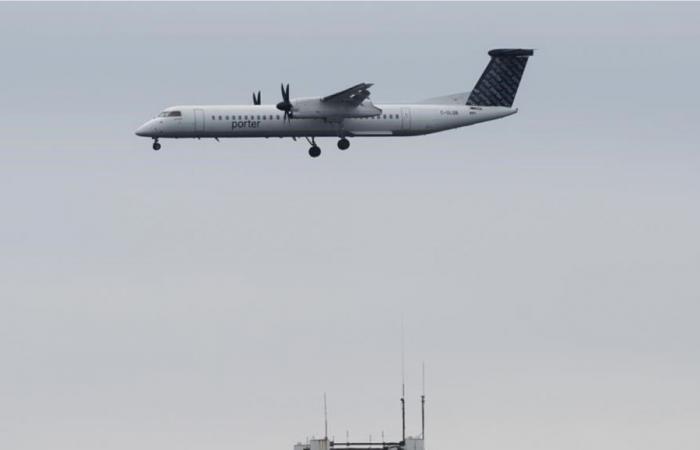On the other hand, WestJet seeks to counter the threat of Flair Airlines. Canada is quietly moving away from its decades-old industrial dynamic, where Air Canada and WestJet were the two largest carriers with no competition.
Porter, once a regional player around the Toronto-Ottawa-Montreal triangle, has tripled its domestic market share over the past 18 months, to nearly 10%. The company now has 35 Embraer jets in its fleet and expects 40 more by 2027, up from zero in January last year.
With its rapid expansion, Porter is encroaching heavily on Air Canada’s territory in Ontario and Quebec, prompting the country’s largest airline to serve complimentary treats and drinks in flight. Cocktails now cost $5 a glass, down from $9. Porter has long boasted similar offerings.
“This shows that they [Air Canada] are concerned about our market share growth and what we’re doing, and that we pose a real competitive threat to them,” Porter President Kevin Jackson said in a telephone interview.
“How can I prove it? They haven’t thrown free beer and wine into Mexico and the Caribbean. We’re not flying there yet.”
Air Canada said it is continually perfecting its on-board products. “We take all competition seriously,” spokesman Peter Fitzpatrick said in an email.
Flair Airlines and WestJet are also jostling for market share.
Flair now has a fleet of 20 planes — still a fraction of WestJet’s 180, but enough to give the older of the two Alberta-based airlines a boost.
In an effort to attract more price-conscious customers — Flair’s core demographic — earlier this month, WestJet replaced its base ticket tier with a new fare category that removed free carry-on baggage and other perks that travellers once took for granted. Customers who choose the “UltraBase” option must pay to select a seat even at check-in. Plus, they board last, though they are relegated to the back of the plane.
Flair joined in the online mockery of Canadians by retweeting a message from satirical news site The Beaverton on social network “.
“Don’t be ultra-basic. Fly Flair,” the budget airline, which offers a nearly identical fare tier, posted a day earlier.
But WestJet may have the last laugh. In its first week, the fare class exceeded expectations with more than 100,000 tickets sold, the company said.
John Gradek, who teaches aviation management at McGill University, said WestJet’s move marks a competitive move against a growing rival.
“They’re basically going one-on-one with Flair,” he said.
Flair stepped in to fill the void left by Air Canada when it pulled out of dozens of regional routes west of Ontario during the COVID-19 pandemic.
Meanwhile, Calgary-based WestJet has been cutting routes to Ontario, Quebec and Atlantic Canada to refocus on its home territory of Western Canada. On the Toronto-Montreal route, WestJet has gone from about 370 flights a month two years ago to none, according to figures from aviation data firm Cirium.
WestJet pulled out of eastern Canada and moved further west “rather than take on Air Canada in many markets,” said Helane Becker, an aviation analyst at TD Cowen. “That’s where they were strong,” she said, referring to British Columbia and the Prairies.
Montreal-based Air Canada followed that decision by staying in central and eastern Canada while scaling back operations in the west. Porter replaced WestJet as Air Canada’s biggest rival on routes such as Toronto-Halifax, Toronto-Fredericton and Montreal-Moncton.
Prices still continue to rise
The new dynamics of the air world do not necessarily mean more competition, particularly on regional travel.
Lynx Air and Swoop are gone — and Sunwing Airlines is set to become WestJet’s main operation next year. As the surviving airlines look to more lucrative overseas markets and abandon smaller planes in favour of higher-volume travel, the number of flights on many short-haul routes has plummeted over the past five years.
Domestic flight capacity will likely decline this year compared with 2023, Becker said. That’s partly why prices continue to rise. Airfares were up nearly 5% in May compared with the same date last year, according to the latest Consumer Price Index report.
WestJet and Air Canada remain rivals, as do Porter and WestJet, with all four competing for traffic between Toronto and Vancouver as well as trips to Florida, among others. But the competition map has been redrawn.
“All carriers are competitors, including the U.S. carriers … But the airline we overlap with the most, of course, is Air Canada,” Porter’s Jackson said.
“We are stealing market share.”






